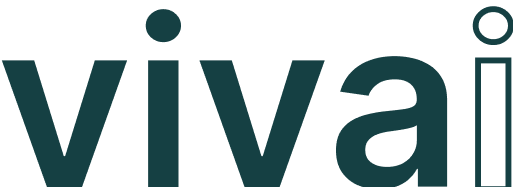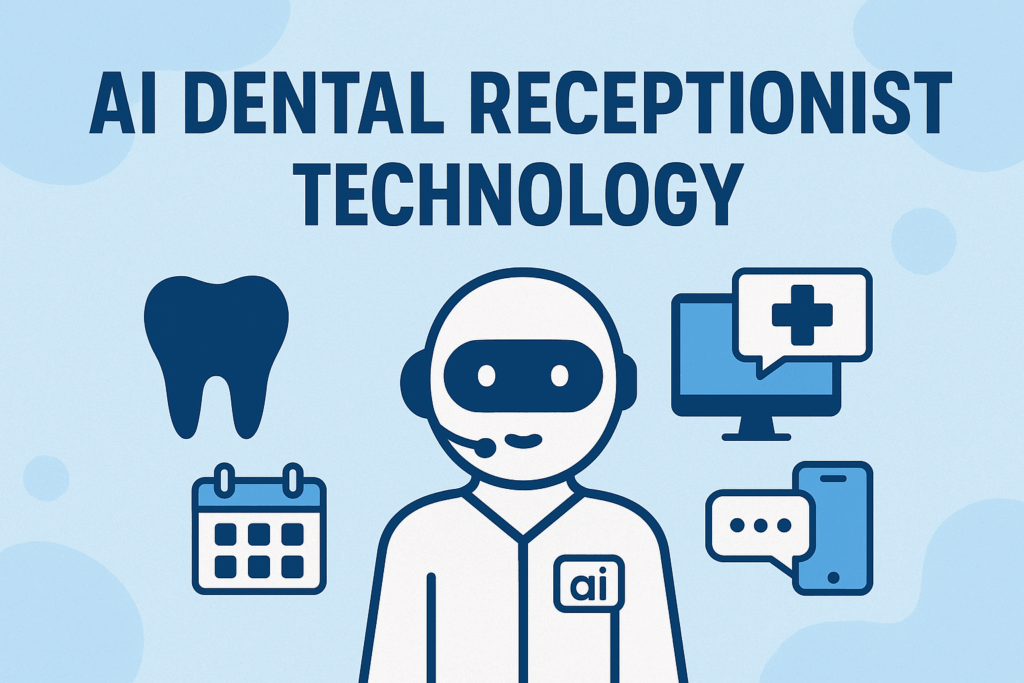Dentistry is entering a new era where access and efficiency matter just as much as clinical skill. At the center of this shift is the AI dental receptionist — technology that can answer calls 24/7, handle scheduling and insurance questions, and re-engage patients who might otherwise slip through the cracks. Today, Forbes highlighted how startups like Viva AI are redefining oral health, showing that the front office may be the most important place where AI can improve access to care.
Why Dentistry Needs an AI Dental Receptionist
The challenges facing oral healthcare are immense. In the U.S. alone, over 70 million people lack dental insurance, while millions more delay treatment until their pain becomes unbearable. Dentists themselves are overwhelmed: they face staffing shortages, rising costs, and more administrative work than ever before.
For years, the conversation around “AI in dentistry” has focused on diagnostics — using imaging AI to detect cavities, gum disease, or abnormalities on X-rays. While this technology is important, it doesn’t solve the first barrier to care: getting patients in the door.
That’s where the AI dental receptionist comes in. By automating the front office — the phone calls, scheduling, insurance questions, reminders, and reactivations — practices can serve more patients without burning out their staff. And patients gain something they’ve long been denied: reliable, clear, and immediate access to care.
What an AI Dental Receptionist Actually Does
When people hear “AI dental receptionist,” they often imagine a chatbot or a robotic voice. In reality, modern AI tools are far more sophisticated — and far more human. At Viva AI, we designed the receptionist to:
- Answer every call, 24/7: No more missed calls during lunch breaks or after hours.
- Book appointments seamlessly: Patients can schedule in real time without waiting on hold.
- Handle insurance and benefits questions: The AI can explain coverage in plain language and help patients understand costs.
- Reactivate patients who didn’t complete treatment: Personalized outreach encourages patients to return and finish needed care.
- Support multiple languages: Breaking down language barriers is crucial in diverse communities.
Think of it less as a robot and more as a digital teammate — one that never sleeps, never forgets, and always stays compliant with HIPAA and SOC 2 standards.
The Economic Impact of an AI Dental Receptionist
For dentists, time is money. Every missed call is a missed appointment, and every unbooked treatment is lost revenue. Research shows that even small improvements in call response rates or case acceptance can translate into thousands of dollars in additional revenue per month for a practice.
The AI dental receptionist changes the economics in three big ways:
- Reduced overhead: Practices can handle higher patient volume without hiring more staff.
- Higher booking rates: Patients who call once and get through immediately are far more likely to show up for care.
- Improved case acceptance: When treatment plans are explained clearly — for example, through tools like Viva AI’s “Oral Health Score” — patients understand the value and say yes more often.
The result is a virtuous cycle: dentists grow sustainably, patients get faster access, and the overall cost of care drops.
Trust, Transparency, and the Human-in-the-Loop
One of the biggest concerns with medical AI is trust. Patients don’t want to feel like they’re being handed off to a machine, and dentists don’t want to lose control over the patient relationship.
That’s why transparency and oversight are essential. A responsible AI dental receptionist should:
- Disclose its role clearly: Patients should know they’re interacting with AI.
- Hand off to humans when needed: Complex questions, emergencies, or sensitive cases should always be escalated.
- Be trained across diverse populations: To reduce bias and ensure equitable performance, models need testing across languages, demographics, and cultural contexts.
- Audit outcomes continually: Practices should be able to see how the AI is performing and where it can improve.
At Viva AI, we’ve made inclusivity and oversight design pillars. Our multilingual platform supports over 150 written languages and 10 spoken languages, and we continually test for performance parity across groups. The goal isn’t to replace humans but to empower them.
The Bigger Picture: AI Dental Receptionist as the Gateway
The AI dental receptionist isn’t just a point solution. It’s the gateway to a larger transformation in oral health.
Imagine this future scenario:
- A patient calls the practice with a concern.
- The AI receptionist answers, books the appointment, and provides initial education.
- At the visit, an FDA-cleared imaging AI reviews X-rays alongside the dentist.
- The treatment plan is explained through the Oral Health Score, giving the patient a visual and numerical snapshot of their oral health.
- Afterward, the AI receptionist follows up with reminders, benefits explanations, and support in the patient’s preferred language.
In this model, conversational AI and clinical AI work hand-in-hand. The receptionist ensures patients show up informed and ready, while diagnostic AI supports dentists in making accurate decisions. Together, they move dentistry from a reactive model — fixing problems once they’re painful — to a proactive model focused on prevention.
Adoption Challenges and How We Overcome Them
Of course, no transformation is without hurdles. The main barriers to adopting an AI dental receptionist include:
- Regulatory uncertainty: Dentists worry about HIPAA and liability.
- Skepticism from practitioners: Some fear AI will depersonalize care.
- Reimbursement models: Insurers haven’t fully adapted to AI-enabled workflows.
The solution is proactive alignment. At Viva AI, we built compliance in from day one — HIPAA, SOC 2, and clear patient disclosures. We emphasize that the AI receptionist augments rather than replaces staff, giving human team members more time for complex, high-value tasks. And we work to integrate with existing insurance and teledentistry frameworks so that adoption feels seamless, not disruptive.
Why Investors Care About the AI Dental Receptionist
It’s no coincidence that analysts and investors are paying close attention. Dentistry is high-volume, high-cost, and fragmented — exactly the kind of environment where automation can deliver quick ROI.
Unlike hospital systems, dental practices often operate as small businesses with thin margins. That makes efficiency gains even more valuable. An AI dental receptionist can directly impact the bottom line within weeks, not years.
This mix of scalability, measurable ROI, and clear patient value is why we believe the AI dental receptionist will be one of the fastest-growing applications of healthcare AI in the next five years.
Looking Ahead
So where does this all lead? In my view, two big opportunities are on the horizon:
- Closing the communication–care loop: Integrating conversational AI with clinical AI so that patients receive not just access but clear, real-time explanations of their health and treatment options.
- Predictive prevention: Moving from detecting disease to predicting risk and guiding patients toward healthier behaviors before problems emerge.
When these pieces come together, prevention becomes not just the better medical option, but the more economical one. That’s when we’ll see oral health truly transformed.
Conclusion
The AI dental receptionist is more than just a digital assistant. It’s the bridge between overwhelmed practices and underserved patients, between diagnostic breakthroughs and real-world adoption.
By ensuring that every call is answered, every patient is supported, and every treatment is explained clearly, this technology addresses the very heart of dentistry’s crisis: access.
I’m proud that Viva AI was featured in Forbes for our work in this space, but the recognition is only a milestone. The real measure will be how many patients get care who otherwise would not have — and how many dentists can sustain their practices while doing the work they love.
The future of dentistry won’t just be about sharper drills or better fillings. It will be about smarter, more accessible, more human-centered systems — and at the front of that future stands the AI dental receptionist.

